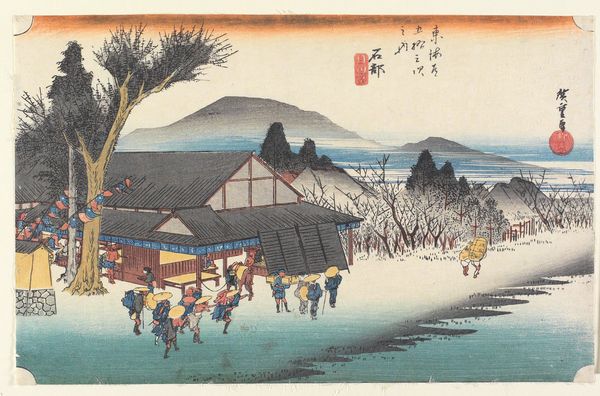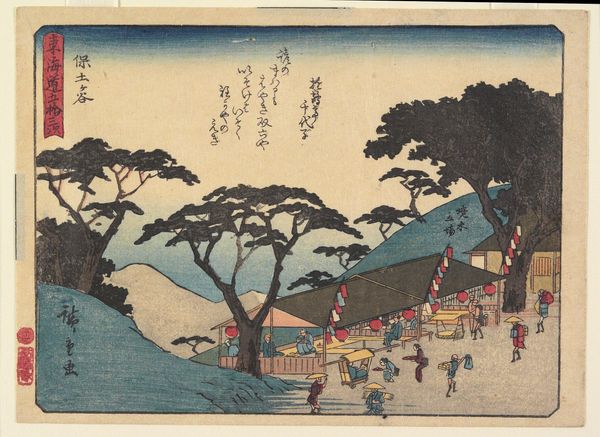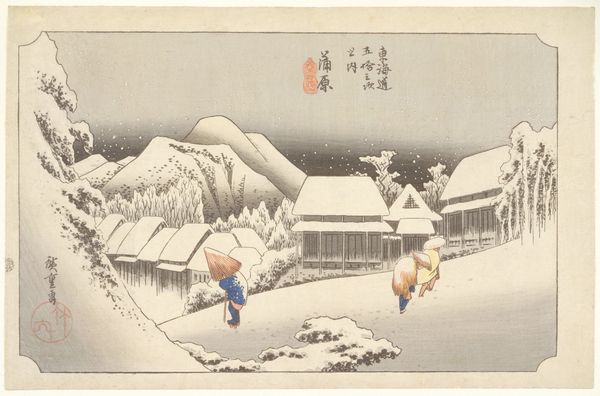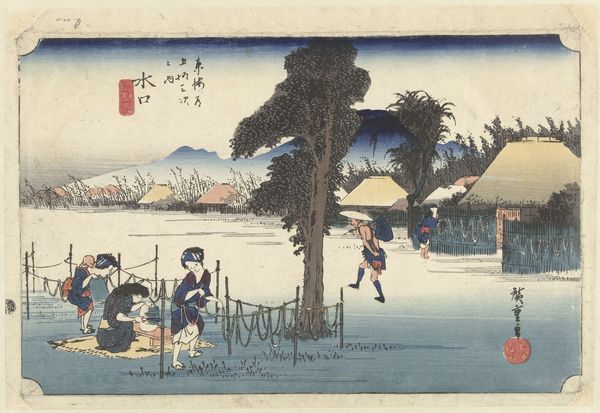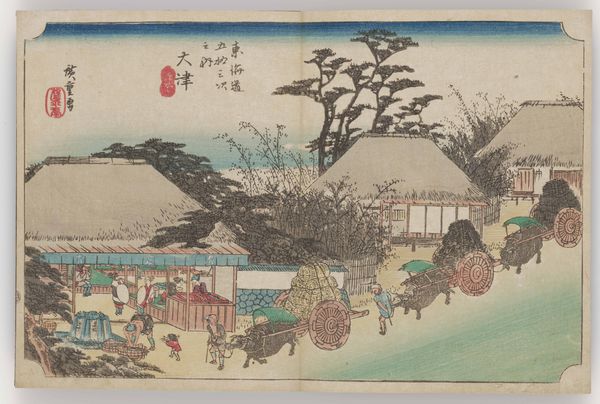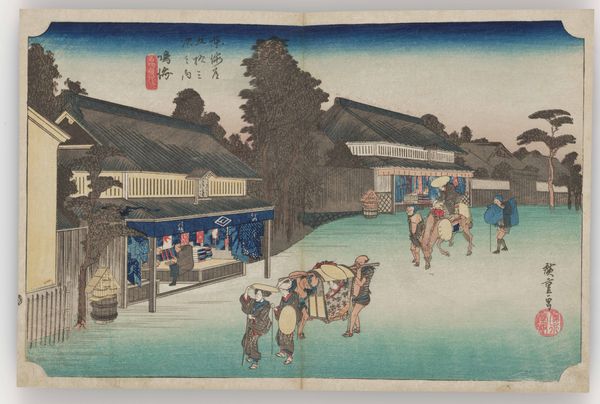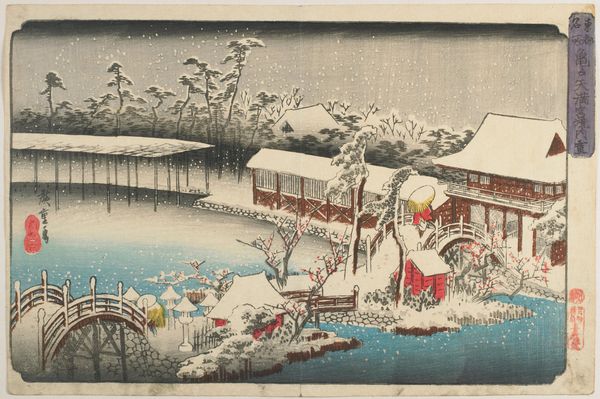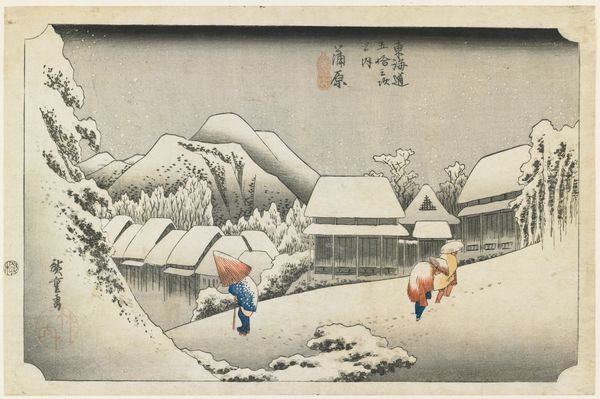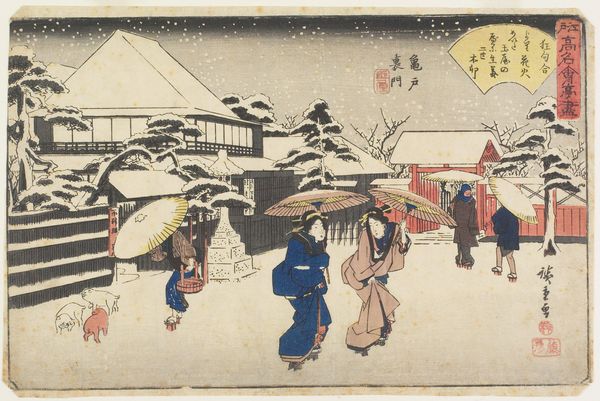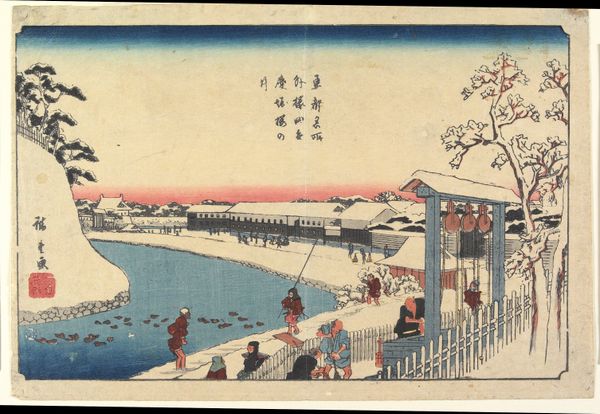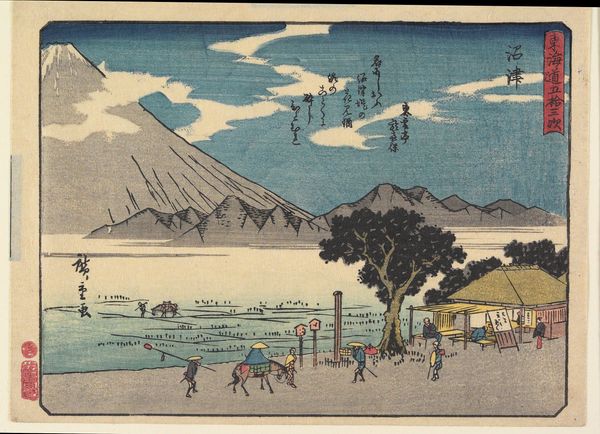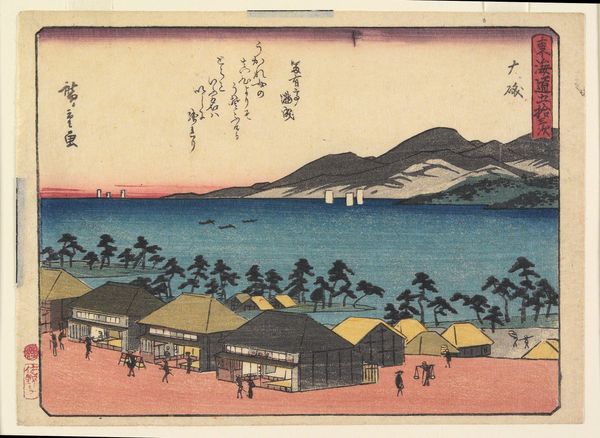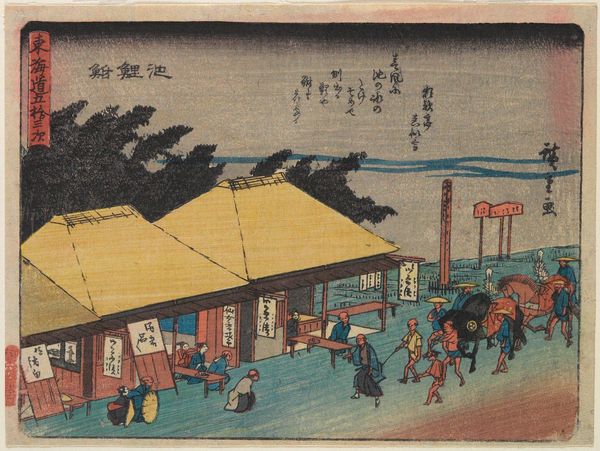
print, plein-air, ink, woodblock-print
# print
#
plein-air
#
asian-art
#
landscape
#
ukiyo-e
#
japan
#
ink
#
coloured pencil
#
woodblock-print
#
genre-painting
Dimensions: 9 1/2 × 14 1/4 in. (24.13 × 36.2 cm) (sheet, horizontal ōban)
Copyright: Public Domain
Curator: Ah, yes, Utagawa Hiroshige's "Ishibe--Megawa Village" from around 1832-1833. A classic example of ukiyo-e woodblock printing. The piece comes to us courtesy of the Minneapolis Institute of Art. Editor: It's bustling, isn't it? Feels like a freeze-frame of everyday life. The colors are so muted, almost dreamlike, and that little touch of red—almost cheeky against the rest of the palette. Curator: Precisely! Hiroshige captured not just the look, but also the feel of a post town along the Tōkaidō road. Think of it as a pre-modern highway pit stop, teeming with travelers and commerce. Editor: It's interesting to me how he frames it. The building on the left is so heavy, looming, almost barricading us from the soft blues of the mountains in the distance. Makes the journey seem daunting. Or is it welcoming? That vibrant red symbol… is that supposed to invite travelers? Curator: Well, that red mark, is indeed a crucial compositional element. The artist’s use of atmospheric perspective to fade out colors as they recede enhances the sense of distance. These prints were both art objects and tourist souvenirs for those making the pilgrimage. Editor: A tourist souvenir! That gives it an unexpected humbleness. I always imagined artwork hanging in hushed galleries. It's sort of radical to think it might have been tacked onto someone's cart to remind them of where they’ve been. I also like this collision between nature and commerce. You have that huge, crooked tree on the left side of the painting overshadowing all of these wooden structures created by human hands. Curator: And those travellers! Laborers bearing heavy packs, suggesting both the effort and purpose inherent in journeying. Their depiction reflects the importance of trade and mobility during the Edo period. We see the beauty in these moments. Editor: Yes, they are literally walking monuments! It also highlights art's crucial public role during this period: part documentation, part imagination, forever reshaping and capturing the present. Thank you! Curator: It’s a landscape, a genre painting, and a history lesson all rolled into one beautiful print. My pleasure!
Comments
No comments
Be the first to comment and join the conversation on the ultimate creative platform.

